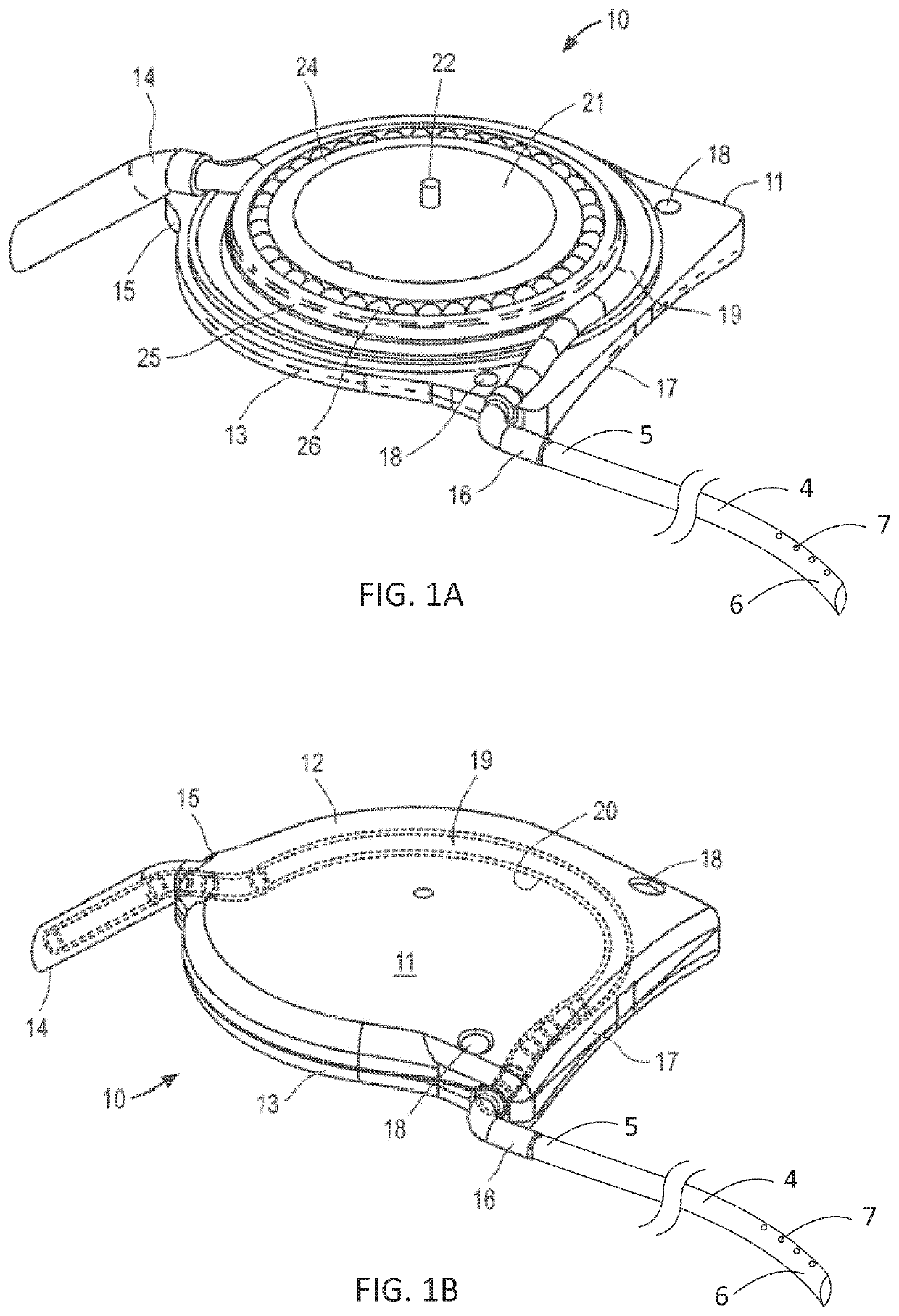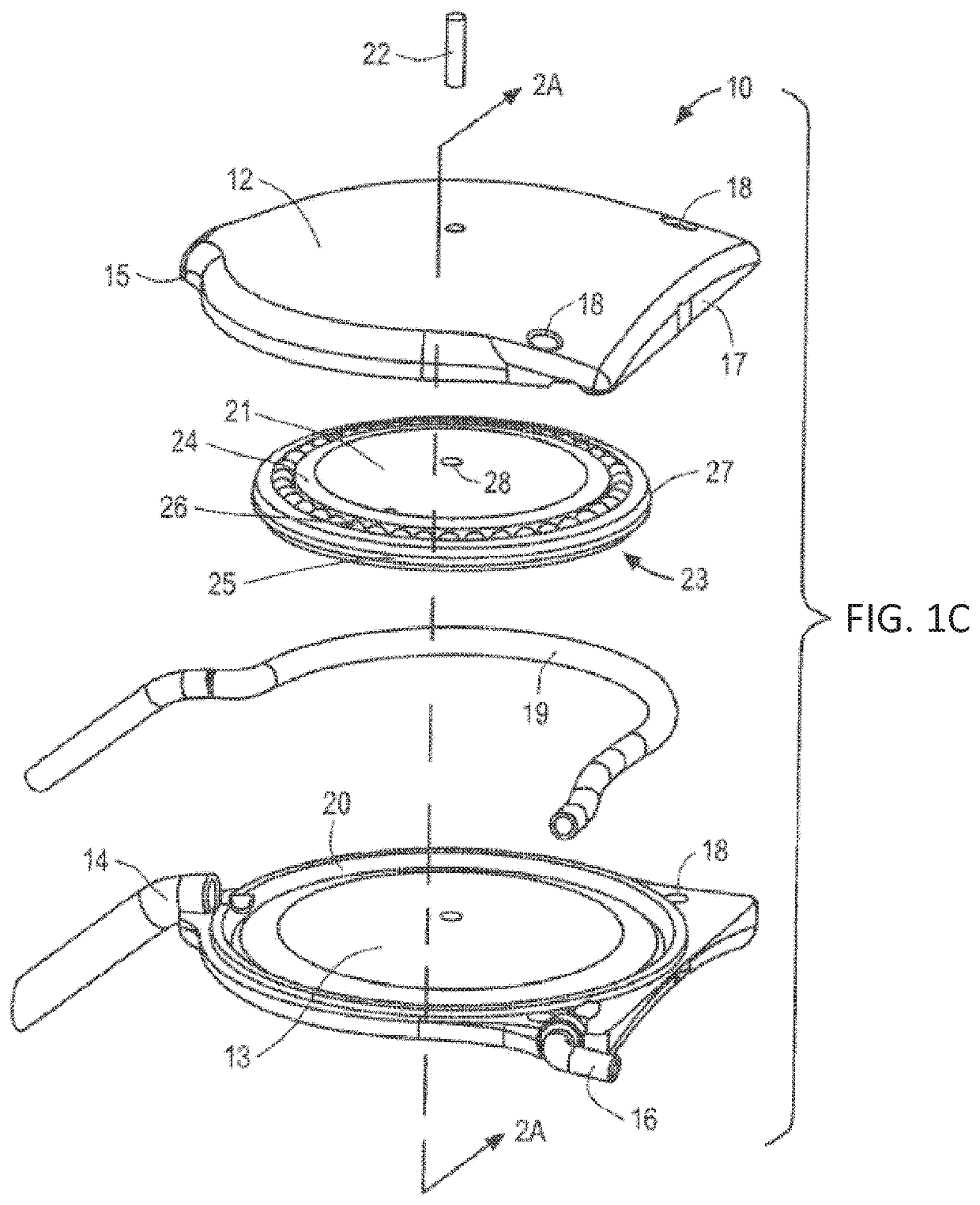Apparatus and methods for treating excess intraocular fluid
a technology of excess intraocular fluid and apparatus, which is applied in the direction of positive displacement liquid engine, pump parameter, prosthesis, etc., can solve the problems of total blindness, loss of vision, optic nerve, etc., and achieve the effect of avoiding hypotony and minimizing the buildup of proteinaceous sedimen
- Summary
- Abstract
- Description
- Claims
- Application Information
AI Technical Summary
Benefits of technology
Problems solved by technology
Method used
Image
Examples
Embodiment Construction
[0037]The ocular drainage system of the present invention comprises an implantable device having a valve that may be non-invasively adjusted to control the resistance to flow of aqueous humor from the anterior chamber of the eye, through the valve, and to a sink outside the eye (e.g., a bleb formed under a scleral flap or the orbital fat space of the eye). For example, as shown in FIGS. 1A and 1B, the implantable device is coupled to a flexible drainage tube having a distal end disposed within an orbital fat space of the eye and a proximal end coupled to an outlet port of the implantable device, so that aqueous humor flows from the anterior chamber of the eye, through the valve and flexible drainage tube, and is deposited in the orbital fat space of the eye. The ocular drainage system further comprises an external control unit that permits a health care provider to periodically adjust the valve within the implantable device to maintain intraocular pressures within a desired range, t...
PUM
 Login to View More
Login to View More Abstract
Description
Claims
Application Information
 Login to View More
Login to View More - R&D
- Intellectual Property
- Life Sciences
- Materials
- Tech Scout
- Unparalleled Data Quality
- Higher Quality Content
- 60% Fewer Hallucinations
Browse by: Latest US Patents, China's latest patents, Technical Efficacy Thesaurus, Application Domain, Technology Topic, Popular Technical Reports.
© 2025 PatSnap. All rights reserved.Legal|Privacy policy|Modern Slavery Act Transparency Statement|Sitemap|About US| Contact US: help@patsnap.com



